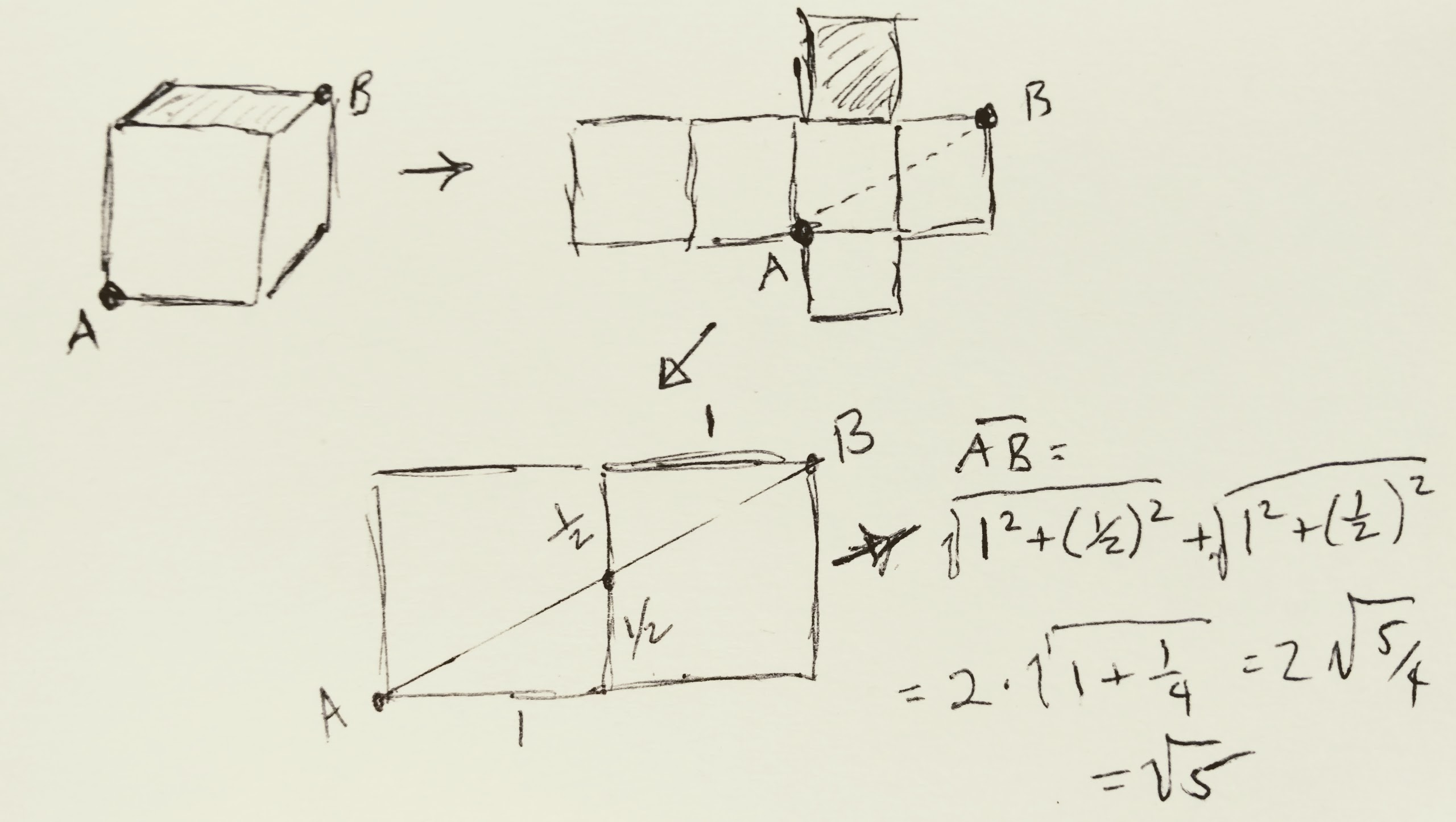
BART is completely overwhelmed by people on their way to the women’s march in Oakland.

Shortest distance from A to B, given a unit cube.
A number of years ago my wife and I enrolled our daughter in a martial arts school. After watching for a few weeks, we decided to join up as well — “What the heck — seems like a good way to get exercise…” Fifteen years later she no longer goes, but we have progressed to the point where we teach at that same school.
It’s a very kid-friendly place. There are periodic half-day “kids camp” events where a couple of hours are spent teaching martial arts, and a couple of hours are spent playing “ninja games” where they can run and scream and roll around to their hearts content. Parents love these events, because they are usually held near holidays, and it’s cheap daycare.
Recently I was eating a sandwich during the lunch break following a bout of ninja games, looking over 50 kids in random happy groups spread across the mat eating, lunch boxes, paper bags, insulated sacks, soda cans, water bottles, juice boxes, conversation and giggles all over the place. All kinds of crumbs, as well — we have to quickly clean the whole mat before activities can resume.
Sitting there, I’m thinking about how remarkably well all these kids get along, when it suddenly occurs to me that this is a totally integrated scene — asian, black, latino, middle eastern, white, and undetermined in roughly equal portions. It was beautiful, and for a moment I could be proud to be human.
Originally shared by Marcel Gagne
Someone asked me recently about Google’s Fuchsia, which this video is not about by the way. He asked what was more important to me, that a device run Linux or that the product be open source and open standards. I stood on the side of open source and open standards. On that note, welcome to the Sacrilege episode of Cooking With Linux. Pull up a chair, enjoy some wine, and enjoy this treat from my open source kitchen.
There are few symbols in the drink world more powerful, more recognizable or more American than the Martini glass. An angular monument to Deco design, its characteristic V-shaped bowl and fine stem have long represented that most iconic of drinks, so much so that there is arguably no other image that better communicates the very notion of the cocktail.
There is also no glass more despised by today’s bartenders.
…
“Just as architecture moved in the direction of brutalism, so the Martini became excessively dry, flavorless vodka replaced gin, and the ritual of mixing was abandoned in favor of the Martini on the rocks,” writes Edmunds. “In both cases, the esthetic impulse of modernism was carried to a self-defeating extreme.”
What had once been, in effect, an emblem of the middle-class cocktail party was by the ‘60s being outwardly shunned as disagreeably dry, too spirituous and representative—both literally and metaphorically—of American corporate values as epitomized by the advertising culture of Madison Avenue.
“The purity, transparency, and lack of messiness of the perfect American cocktail now seemed to mirror a sterile lack of messiness in life and work,” explains Rudin, “won at the expense of emotional involvement and the realities of life.”
Following its nearly two decade-long decline, the Martini would fall out of vogue entirely by the early ‘70s. In 1973, Esquire derided it as “a bitter, medicinal-tasting beverage” that represented “everything from phony bourgeois values and social snobbery to jaded alcoholism and latent masochism.”
http://punchdrink.com/articles/the-life-and-death-of-the-martini-glass-history/

I am oddly happy with this little video — it’s an Anise Swallowtail butterfly, on a windy day.